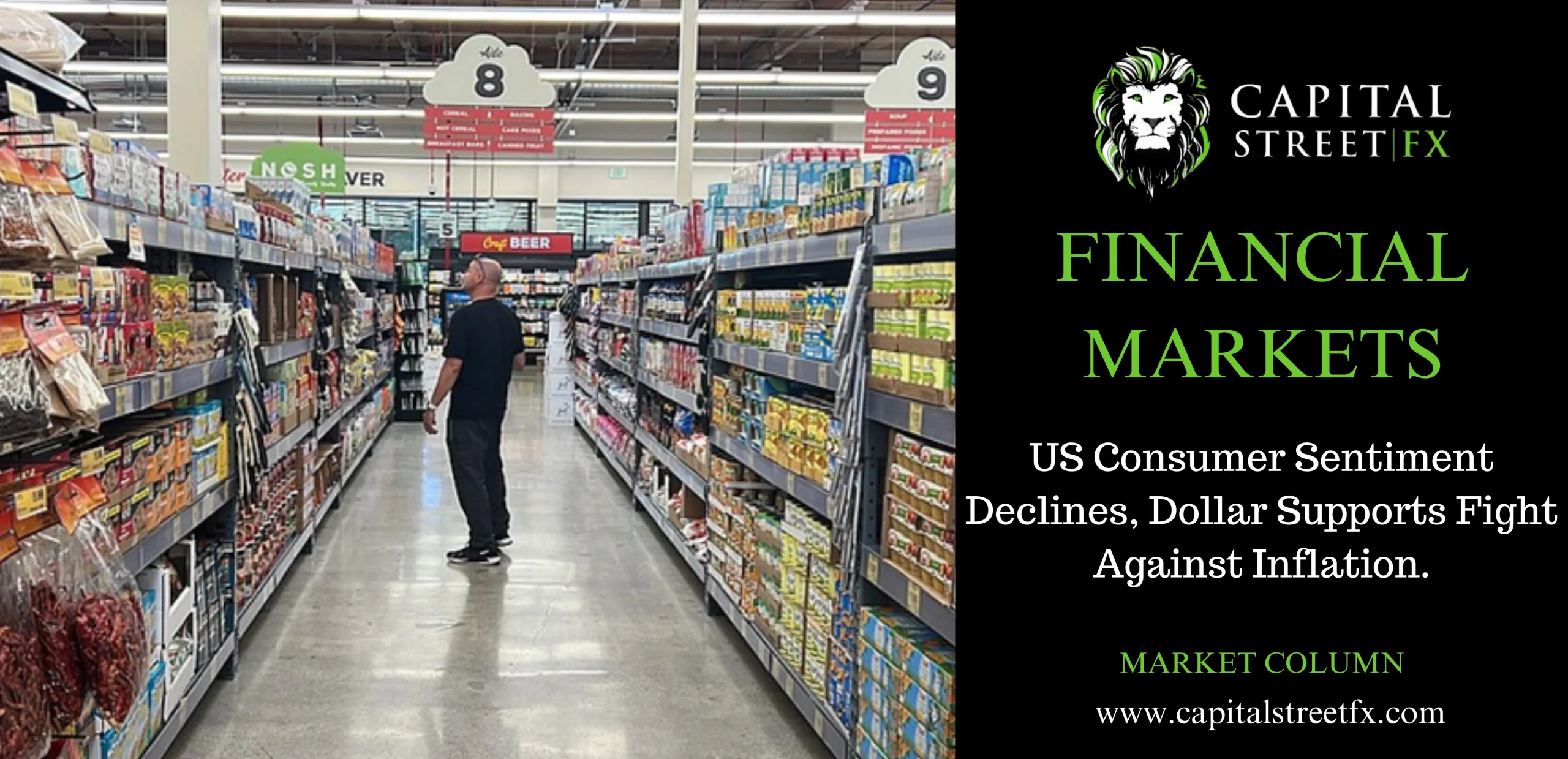US Consumer Sentiment Declines, Dollar Supports Fight Against Inflation.
In recent times, the landscape of consumer sentiment in the United States has seen some significant fluctuations. A multitude of factors, including rising inflation expectations and global geopolitical events, have played their part in shaping the sentiment of American consumers. In this article, we delve into the intricacies of this evolving scenario.
Understanding the Shift in Consumer Sentiment
A Decline in Consumer Mood
October witnessed a dip in consumer sentiment for the third consecutive month, as reported by the University of Michigan. This decline is of paramount importance, as it impacts nearly all demographic groups. While multiple variables contributed to this shift, two key factors have drawn our attention.
Rising Inflation Expectations
One of the primary drivers behind the decline in consumer sentiment is the rising expectation of inflation. Over the next year, consumers are increasingly concerned about the surge in prices. The 12-month inflation expectations among consumers recently hit a five-month high.
Geopolitical Unrest
Another critical element to consider is the ongoing geopolitical turmoil. The timing of the sentiment survey, conducted on October 11, coincided with the conflict between Hamas and Israel. This, undoubtedly, cast a shadow on the minds of American consumers. Moreover, the strike in the automobile industry and the tumultuous political landscape in Washington may have further exacerbated the decline.
An Economist’s Perspective
Shannon Seery, an economist at Wells Fargo in Charlotte, North Carolina, highlights that several reasons could have contributed to this sentiment drop. The volatile global events and the overall macroeconomic uncertainty are certainly factors to consider. However, it’s crucial to note that consumer sentiment doesn’t always correlate directly with consumer spending. While sentiment may fluctuate, the forecast for spending is more likely to indicate a slowdown rather than a collapse.
The Numbers Behind the Sentiment
University of Michigan’s Consumer Confidence Index
The preliminary reading of the University of Michigan’s total consumer confidence index for this month stood at 63.0, a notable decrease from the 68.1 recorded in September. This data is considerably lower than the preliminary reading of 67.2, as predicted by economists polled by Reuters.
Consumer Spending vs. Sentiment
Interestingly, there hasn’t been a strong correlation between sentiment and consumer spending. The latter is still largely motivated by rising earnings, a testament to the competitive labor market, and the surplus savings accumulated during the COVID-19 pandemic. In September, the economy added 336,000 new jobs.
Inflation Forecasts
One-year inflation forecasts have seen a notable increase, rising from 3.2% in September to 3.8% in October. This figure is the highest it has been since May 2023 and is significantly higher than the 2.3% to 3.0% range observed in the two years prior to the pandemic.
Moreover, the five-year inflation outlook, which had remained relatively stable between 2.9% and 3.1% for 25 of the previous 27 months, increased to 3.0% from the previous month’s 2.8%. These numbers have garnered the attention of Federal Reserve officials as they formulate monetary policy strategies moving forward.
Interest Rates and the Dollar
The U.S. central bank’s benchmark overnight interest rate has seen a substantial increase of 525 basis points since March 2022, with the current range between 5.25% and 5.50%. This aggressive move aims to combat the rising tide of inflation.
In response to these developments, Wall Street stocks experienced some fluctuations, while the dollar remained relatively stable when compared to a basket of currencies. Additionally, Treasury bond prices saw an uptick.
Conclusion
The dynamics of consumer sentiment in the United States are continually evolving, shaped by a multitude of variables. The rise in inflation expectations and ongoing geopolitical events have left their mark on the collective mood of consumers. However, it’s important to note that consumer sentiment does not always directly translate into consumer spending.
In these uncertain times, the Federal Reserve closely monitors inflation expectations as it navigates the path of monetary policy. The recent interest rate hikes are indicative of their commitment to tackling inflation head-on.
As the nation grapples with these economic fluctuations, it remains essential for consumers to stay informed and prepared for potential changes in the economic landscape.

